
There's an old adage that claims one should "beware the man with one rifle, because he probably knows how to use it." And although that's undoubtedly oftentimes true, the fact remains: what fun is it to have just one rifle, when there are literally thousands to choose from? And when we Canadians can choose from incredibly affordable single-shot .22s all the way up to bullpup semi-automatic rifles firing .50 BMG, to say we're spoilt for choice would be an epic understatement. But in the midst of all these various options at a gun owners disposal lie five rifles that we think every Canadian should make a point of owning. Here they are.
The Lee-Enfield
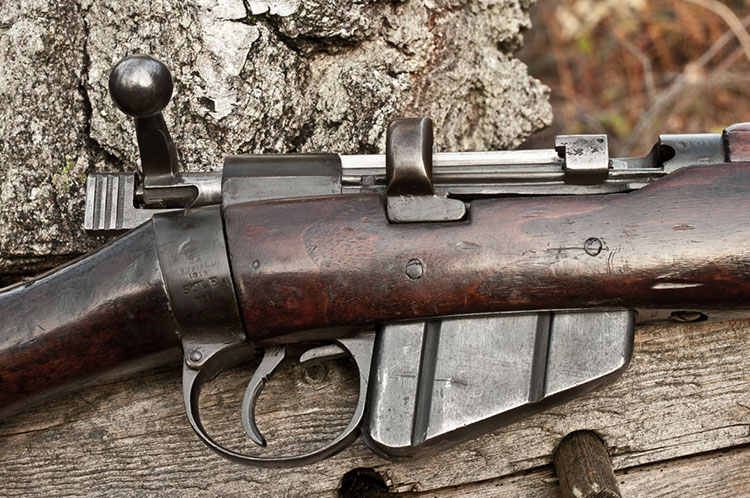 What: The Lee-Enfield rifle; any which one will do... although one made at the Canadian Long Branch Arsenal is probably the most quintessentially Canadian of the bunch.
What: The Lee-Enfield rifle; any which one will do... although one made at the Canadian Long Branch Arsenal is probably the most quintessentially Canadian of the bunch.
Why: Quite simply because it may be the single most effective combat rifle ever fielded, and will have been issued to troops for 118 uninterrupted years by the time it is finally retired. Having grown out of the creation of the smokeless .303 British round it fires (see Calibre's Calibre on page 47 for more information), the Lee-Enfield served the English Empire at its veritable height when it debuted in 1895, and has subsequently seen service in one form or another in almost every armed conflict since.
Initially, the Lee-Enfield stood apart from its contemporaries in two arenas: the speed with which the action could be manipulated, and its then-massive 10-round magazine capacity. The former could be credited to a pair of distinct and innovative machinations of the James Paris Lee-designed action, the most obvious of which was the action's cock-on-closing design. Compared to the cock-on-opening design of the Mauser and Mosin, the Lee-Enfield separated the task of cocking the firing pin spring from the effort required to extract the fired round, which in turn also allowed the shooter to build forward momentum with the bolt before encountering the resistance of the firing pin spring. This, combined with the Lee's rear-locking lug layout that allowed the bolt handle to be placed just above and aft of the trigger (as opposed to ahead of and far above as on the Mausers of the day), made for a rifle that could be manipulated in a much more rapid and fluid manner, requiring less exertion, and allowing for superior accuracy from shot to shot.
That speed combined with a magazine capacity that was twice that of its contemporaries made for an awe-inspiring battle rifle, capable of developing a withering volume of fire unmatched by anything other than the machine guns of the day. In fact, the current world record for aimed bolt-action rifle fire was set in 1914 by a musketry instructor in the British Army, Sergeant Instructor Alfred Snoxall, who put 38 rounds on a 12" target at 300 yards in one minute That feat more than doubled the already impressive rate of accurate fire required of regular troops during the infamous "mad minute," in which soldiers would be expected to score 15 hits in the same amount of time, at the same distance as Snoxall's superlative record. In fact, the Lee-Enfield gave British troops such an advantage that German troops advancing under a hail of fire from the British Expeditionary Forces' Lee-Enfields would later report that they'd come under fire from innumerable machine guns, such was the volume of fire maintained by the British troops armed with their Lee-Enfields.
And the Enfield's story wouldn't end there. Seeing considerable service with British and Commonwealth forces in World War II (as the Lee-Enfield No. 4), as well as Korea, Lee-Enfields are still cropping up on today's battlefields in perfectly serviceable condition; a testament to the rifle'sincredibly robust design and manufacture. In fact, members of our own Canadian Forces, the Canadian Rangers, are still issued Lee-Enfield No. 4 rifles upon enlistment, and receive 200 rounds of .303 British ammunition each year. Why? Because in the rugged arctic conditions in which the Rangers operate, the Lee-Enfield can be relied upon to work. Perhaps even more telling is that when the DND announced a program to replace the venerable Ranger rifles (typically reissued World War II-vintage No. 4s) in the face of 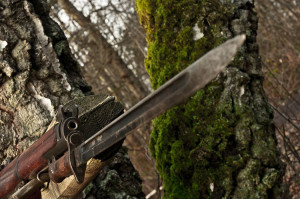
As impressive as its military history is, the Lee-Enfield's attraction to the average Canadian stretches beyond the bounds of its army roots, and brings to the fore memories of hunting trips gone by. Capable of taking nearly any and all game one could encounter in this country, the same reliability, accuracy, and ease of use that earned it so many military accolades are precisely what make this former assault weapon the preferred tool of so many modern day sportsmen. Available in a myriad of various versions and conditions, they can be found with price tags ranging from $50 for the ugliest of sporterized rifles (a term that defines rifles that have suffered the indignity of having their full wooden stock's cut down to expose the barrel and make the rifle appear more like a conventional sporting rifle) on upward to many thousands of dollars for a particularly uncommon version in good condition, making them not only useful, reliable, and historically relevant, but collectable too. Combine all that with the fact that they can be found in nearly every corner of the country, and it's no surprise that the Lee-Enfield is possibly the most important rifle in the Canadian market.
The Cooey .22
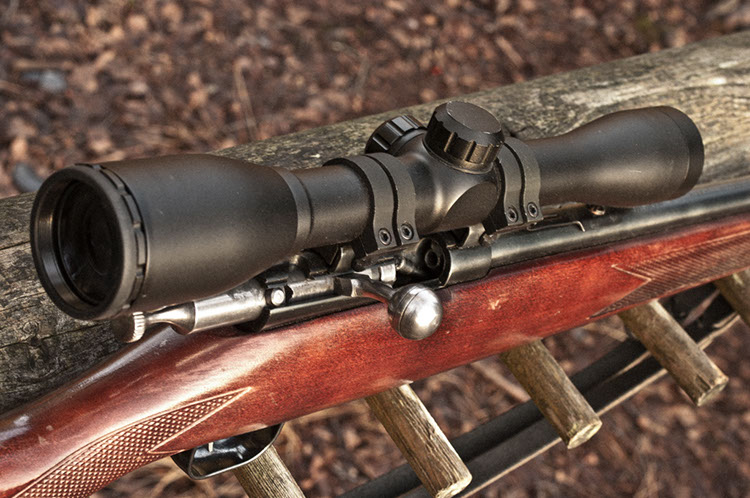
Why: Because no other gun in the country has introduced as many people to the wonderful world of sport shooting as the immortal Cooey rimfire. Maybe you have one, maybe your dad has/had one, or maybe you've shot a friend's... but chances are good that if you've spent any time around firearms in this country, you've put at least a couple of rounds down a Cooey barrel.
Known as the H. W. Cooey Machine & Gear company at its inception, the company started as the brainchild of a 23-year old by the name of Hebert William Cooey. Billing himself as a "mechanical expert and practicing machinist;" a title not wholly deserved given Herbert had never finished an apprenticeship with the Grand Trunk Railroad and quit a job on an assembly line in Cleveland, Herbert nonetheless announced his intentions in November of 1903 and opened the doors of a small machine shop on the southeast corner of Queen Street and Spadina Avenue in Toronto a month later. But, proving that the best education isn't always academic in nature, Herbert quickly set about earning his billing; building his first car in 1907 (which incorporated a couple of Cooey's own innovative advancements, such as pre-heated fuel and dual exhaust valves) and doing a fantastic trade. By 1907, he'd already outgrown the small curbside location, and moved his machining plant across town to a larger facility at Bridgman and Howland Avenue in order to better meet demand.
And it would appear that the move occurred just in time. Called into action to manufacture munitions as well as the folding peep sights for the infamous Ross rifle during the First World War, Cooey's firm exploded into activity in their new facility, earning a reputation for an impressive level of quality that was matched only by their impressive productivity. And Herbert wasn't about to let that momentum end with the war. Flush with funds as a result of the lucrative government contracts, Herbert took the opportunity to invest in his firm and his brand, putting pen to paper and launching a rifle of his own design in 1919: the single shot, bolt-action Cooey Canuck. An overnight sensation, the affordable but accurate Canuck sold like proverbial hotcakes, and even went so far as to win the Certificate of Honour in 1924 at the Wembley Exhibition in London, England... the same year Herbert himself took home a silver medal at the Olympics for trapshooting.
By now the company formerly known as H. W. Cooey Machine & Gear had committed itself to the manufacture of sporting arms, and changed its name to reflect that: becoming the H. W. Cooey Machine & Arms Company. Advertising the ever-popular Canuck (later renamed the Ace) in a myriad of papers and magazines, Cooey continued to put forth an image of excellent quality and wasn't afraid to say so with ads that read "Make mine a Cooey—I want the best," and "Don't Take a Substitute." But it was the ad in a 1922 issue of Rod & Gun Canada that perhaps best defined the Cooey rifle as "The ideal Christmas present for the red-blooded boy, whether he 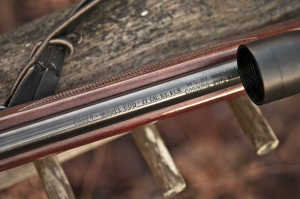
Not surprisingly, in the face of his rifle's astounding success, Cooey once again had to uproot his operation and seek larger quarters; eventually landing in Cobourg in 1929. Inheriting the former site of Cobourg's largest industrial operation, the Ontario Woolen Mill, Cooey's new headquarters stretched across four floors and gave the firm the increased manufacturing capacity Herbert desperately needed in order to grow. And grow he did. Creating the popular Model 60 tube-fed repeating rifle in 1939, the Model 82 training rifle during World War II (which earned a contract for the procurement of 34,810 rifles by the army and R.C.A.F. air cadet corps), and the much-loved Model 84 shotgun in 1948, Herbert Cooey would eventually sell the company that bore his name to the Olin Coporation in 1961, shortly before his death in the February of 1962 at age 80. The Olin Corporation subsequently put the firm under the management of their Winchester-Western Division, under whom the Cobourg-based factory would continue to manufacture rifles and shotguns of Herbert's design until its dissolution and closure in 1979.
By the time the plant was closed, it was estimated that over 6 million firearms had been produced by Cooey, all of which were made in Canada, and the majority of which remain here to this day. Incredibly long-lived and surprisingly accurate, Cooey's rifles are a mainstay of the Canadian firearms tradition, and still pose an excellent value on the used market. With many available for less than the cost of a tank of gas, they're a great piece of Canadian history that never disappoints, and are still entirely able to fulfill that promise of being the ideal Christmas present for the red-blooded boy (or girl), whether he (or she) lives in the city, the town or the country.
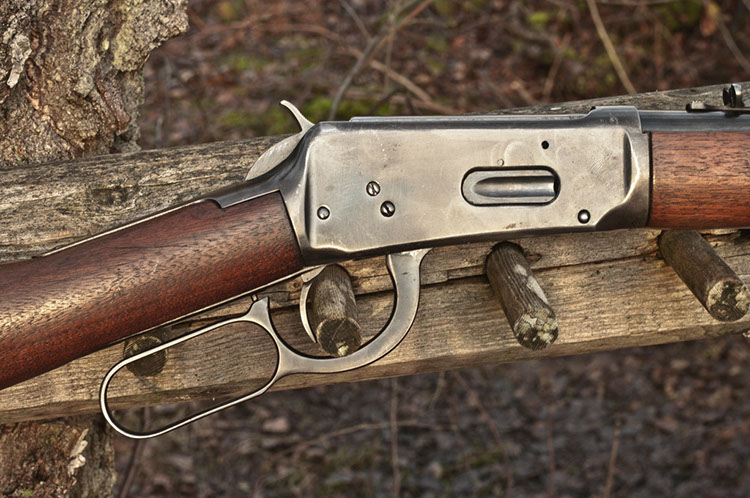
What: The Winchester lever-action rifle; Models 1866 to Model 1894.
Why: Colloquially known as "The Gun that Won the West," it is a rifle that earned the entirety of its substantial reputation on this continent. While Lee-Enfields were overseas fighting for King and country, the Winchester repeating rifle was here, doing what the frontiersmen asked of it. So it should come as no surprise then that the history of the Winchester repeater is so absolutely and inextricably linked to that of almost the entire American gun industry.
Beginning life as the patent drawing of one Walter Hunt of New York in 1848, the lever action rifle's creation was a far cry from successful; utilizing two levers and firing utterly impotent "Rocket Ball" ammunition (in which the powder was contained within a hollow in the base of the bullet), the gun was a dismal failure. At least it was, until a couple of fellows by the name of Horace Smith and Daniel Wesson got their hands on it.
Reworking the patent to simplify the mechanism and adapting the action for use in a pistol format, Smith and Wesson assembled a myriad of investors and formed the Volcanic Repeating Arms Company in order to manufacture their new lever action rifle and pistol. However, while the revised and simplified action worked wonders for the rifle's reliability, it remained a poor performer due in large part to the slightly modified .25- and .32-calibre "Rocket Ball" ammunition it still fired. Horace Smith's efforts to correct this would lead to his eventual creation of the world's first rimfire cartridge, as well as he and Daniel Wesson's subsequent departure from the Volcanic Repeating Arms Company in order to produce the revolutionary Model 1 Smith & Wesson revolver chambered in that first rimfire cartridge; the .22 Short.
That left the remaining shareholders in the Volcanic company with little in the way of prospects, and although the company was moved to New Haven, Connecticut in an effort to salvage it, Volcanic slowly slid into insolvency and declared bankruptcy in 1856. However, Volcanic's former majority shareholder was a fellow by the name of Oliver Winchester, who subsequently set about purchasing the firm's remaining assets and restructuring the company as the New Haven Arms Company. Recruiting Benjamin Henry to redesign the rifle in order to compete with its vastly more powerful competitors, Henry first set about addressing the Volcanic rifle's lacklustre cartridge performance by replacing the bizarre "Rocket Ball" ammunition with his new .44 Henry rimfire cartridge, and then heavily modified Smith's rifle design to fire said cartridge. The result was the birth of the legendary Henry rifle of 1860. An instant favorite amongst everyone that could get their hands on it, the Henry was wielded fearsomely by Union forces during the Civil War, and would come to be known as "that damned Yankee rifle that they load on Sunday and shoot all week" by Confederate soldiers.
In light of his rifle's wild success, Benjamin Henry began to feel that the compensation he was being afforded by Winchester was becoming inadequate, and so he approached the Connecticut legislature in an attempt to have the ownership of the company turned over to him in 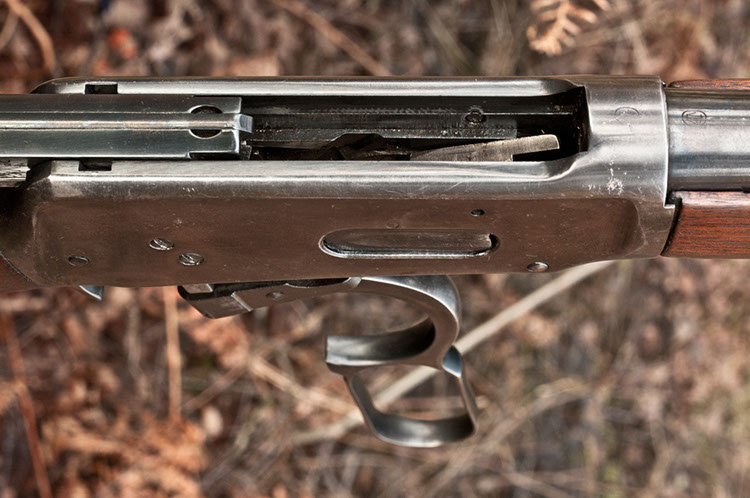
Which brought Oliver Winchester to produce the definitive "gun that won the west;" the Model 1873. Chambered first in .44-40, and subsequently in .38-40 and .32-20, this steel-framed lever gun was one of the most popular guns carried by frontiersmen due to both the carbine's easy handling characteristics as well as its various pistol calibers. Meaning one needed only carry one type of ammunition, the '73 was so popular in fact that it led to Colt manufacturing a version of the Single Action Army specifically in .44-40 so as to broaden their pistol's appeal to Model '73 owners. But if the '73 was the gun that won the west (and the north), it would be the Model 1876 that brought law and order to it. Chambering the massive .45-75 round, the '76 became the Northwest Mounted Police's long arm of choice for decades, and proved so capable in the Mounties' hands that the Texas Rangers ended up buy a few Mountie Model '76s of their own.
But if the '76 brought law and order to the land, there can be no denying that it was the Model 1894 that put dinner on the table. Designed by John Browning, who had begun working with Winchester in 1883, the '94 fired (among others) the smokeless .30-30 round, and became a sensation that would last well over a century. And why wouldn't it? The final evolution of a rifle that drew the attention of Horace Smith, Daniel Wesson, Benjamin Henry, Oliver Winchester, and John Browning, the Model '94 boasts a resume and a history that no rifle will ever be able to match.
The M14s
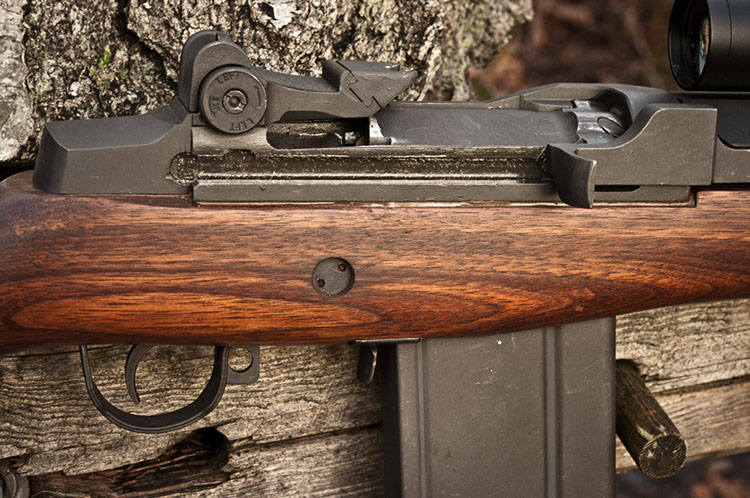
Why: Because it's a semi-automatic, magazine-fed rifle that uses an action devised by Canadian John C. Garand that we can buy new for $430. Oh yeah, and it's one of the few guns we can have that Americans can't.
Yes, you read that right. Due to the US' protective import laws that require a certain percentage of a firearm's parts be manufactured in America, new versions of the entirely Chinese-made Norinco M14s are no longer available to our southerly neighbours. And those that were imported to the United States prior to the ban carry prohibitively high price tags that range anywhere from $500 to $1,200 for a used example. And yet here, you don't need to look very hard to find used examples in the sub-$400 bracket!
Which makes it an especially enviable proposition, given both its power, and its provenance. Essentially a box magazine-fed variant of the venerable M1 Garand rifle, the M14 took Garand's stone-axe reliable action and brought into the next generation; trading en-bloc clips and big, 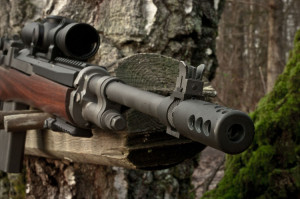
While much of the mystique of rifles like the Lee-Enfield, Winchester lever gun, and even the M1 Garand are wrapped up in their historical accomplishments, the M14 is something else entirely. Having only served for a brief period in a military that's not our own, the M14's legacy in Canada owes much more to the relatively recent arrival of the Norinco M14s (the "s" denoting Sporter), and its subsequent popularity, that it does to the rifle's military record. Remarkably affordable and yet incorporating a forged receiver (a feature typically reserved for more premium brands of the M1A rifle down south), the M14s makes up for its relative lack of provenance by being extremely well suited to the typical Canadian uses as well as ridiculously affordable. Combining the capability of the full-power .308 Winchester round with the famous reliability of the Garand action in a gun that's blessedly non-restricted, the Norinco and Polytech M14s have become a huge hit with hunters, sport shooters, hobbyists, and bushwhackers alike.
Of course, such popularity within a diverse market oftentimes means there's a serious market for modification as well, and this is perhaps the M14s' most impressive attribute. While the readily customized AR-15s remain relegated to approved gun ranges due to their restricted status, the M14s' non-restricted status means owners have continued to seek out options, parts, and accessories that will better equip their big battle rifle to meet their individual demands. Lightweight stocks, railed hand guards, a variety of optic and sighting options, and even vastly more accurate aftermarket barrels are readily supplied by any number of retailers and distributors, while a few M14-specific gunsmiths have even cropped up across the country to help people build and modify their rifles.
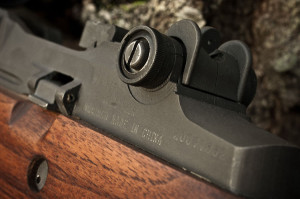
So while it's tempting to consider the FN FAL to be the quintessential Canadian battle rifle and thus more deserving of a position on this list than is a Chinese-made clone of an American rifle, the reality is that the FAL's prohibited status makes ownership thereof an unrealistic proposition for most Canadians. However, in an incredible twist of fate, the opposite is true of the FAL's American contemporary, as Norinco M14s are not only damned affordable and relatively plentiful, but also ironically prohibited in America. Add in the tried and true nature of the healthy and versatile .308 Winchester round it fires, alongside its rampant aftermarket support from Canadian companies, and you have a Chinese-made recipe for Canadian success.
The AR-15
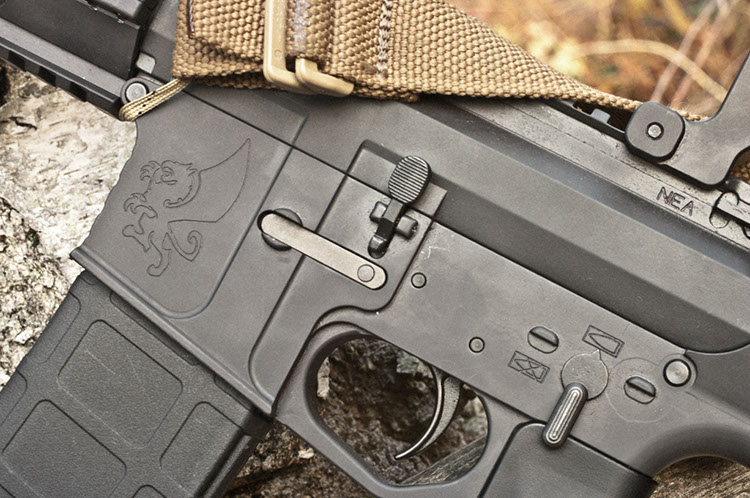
Why: Frequently billed as a horrifying assault weapon of unparalleled power and lethality, the reality is that the AR-15 is arguably the most influential rifle extant, and there's a good reason for that: it's almost perfect.
The brainchild of a fellow by the name of Eugene Stoner, the AR-15 rifle represented a huge shift in firearms technology when it debuted. At a time when rifles were still firing huge .30-06 rounds and came encased in wooden stocks, the application of Eugene Stoner's extensive aviation experience towards the creation of a rifle that traded steel for aluminium and wood for plastic was accompanied by much derision. In fact, when Stoner's first attempt at the AR platform, the big AR-10 chambered in 7.62 NATO, went to the US Army's Aberdeen Proving Ground in 1956, it was summarily dismissed in favour of the far more traditional (but still excellent) M14.
But it wouldn't be forgotten for long. Called back into action to build a scaled-down version of that rifle that would be capable of firing the then-new .223 Remington, or 5.56 NATO round, Eugene Stoner's chief assistant at ArmaLite, a division of the Fairchild Engine & Aircraft Corporation, set about turning Stoner's AR-10 into the smaller, lighter, and more wieldy AR-15. By 1963, fully-automatic military versions of the new rifle would be deployed in Vietnam, and by the late sixties, the M16 would be formally adopted as the service rifle for the American armed forces. A couple of decades later, in 1984, our Canadian forces would follow in those American footsteps, adopting a variant of Stoner's design, and calling it the C7. Initially developed by a Canadian Forces liaison officer working alongside the United State Marine Corp team 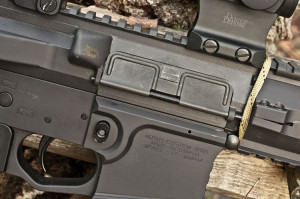
Which is precisely what's made the civilian, semi-automatic AR-15 such a popular rifle. Inherently accurate, incredibly easy to shoot proficiently, and modular in design, the AR-15 is probably the most flexible rifle on earth; capable of changing everything from furniture and sights to chamberings and barrel lengths in mere minutes with the fitting of various upper assemblies, handguards, grips, and stocks. With the removal of a pair of pins and the turning of a few screws, a 10-pound 20" barrelled, heavyweight tack driver of an AR-15 can be turned into a svelte 6-pound short-barreled rifle sporting ultra light carbon fibre furniture. Of course, the AR-15's flexibility doesn't preclude less dramatic changes; for most owners it's more than enough to be able to step into the garage and swap a fixed position stock out for a multi-way adjustable unit, or remove a factory trigger and drop in an aftermarket piece without the headache of custom fitting or stoning.
Of course, this flexibility, and the rifle's familiarity with the many millions of North Americans that have carried one into battle has led to a massive civilian demand met by hundreds of manufacturers. From ultra-affordable Norincos to high-end Knight's Armament rifles (Coincidentally, the last company Eugene Stoner worked for, and the reason their products are known as Stoner Rifles-25s, or SR-25s) to Canada's own North Eastern Arms (the rifle pictured here), there is no shortage of AR-15 manufacturers and no shortage of price points they can be found at.
But the motivations for every Canadian gun owner having an AR-15 in the safe don't end there... sadly. Woefully relegated to restricted status by our firearms act, the AR-15 routinely finds itself under legislative attack by those that would prefer to see any and all militaristic firearms summarily banned from private ownership, which means the best way to secure the AR-15 for future generations is to increase the number in private hands. After all, it is this generation's Lee-Enfield; a rifle that has defended Canadian lives and the Canadian way of life in places like Croatia, Bosnia, Iraq and Afghanistan. And like the Lee-Enfield before it, it's done all that we've asked of it and more, providing accuracy and reliability under conditions most civilians wouldn't even dream of subjecting their rifle to... which is precisely what makes the AR-15 makes such a great civilian rifle. Capable of handling just about every task put before it with ease, it is undeniably one of the greatest rifles ever created, and not surprisingly, one every Canadian should own.